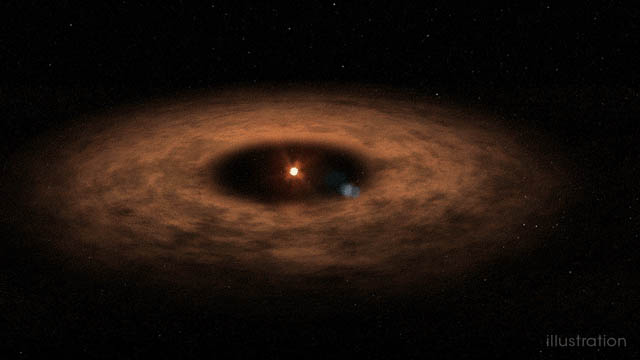This artist’s concept shows the dusty disk surrounding the star AU MIcroscopii. Astronomers have studied this system extensively but only recently identified the presence of a planet there. The find provides a laboratory for studying planet evolution and formation. (NASA’s Goddard Space Flight Center/Chris Smith (USRA))
Home This artist’s concept shows the dusty disk surrounding the star AU MIcroscopii. Astronomers have studied this system extensively but only recently identified the presence of a planet there. The find provides a laboratory for studying planet evolution and formation. (NASA’s Goddard Space Flight Center/Chris Smith (USRA)) This artist's concept shows the dusty disk surrounding the star AU MIcroscopii. Astronomers have studied this system extensively but only recently identified the presence of a planet there. The find provides a laboratory for studying planet evolution and formation. (NASA's Goddard Space Flight Center/Chris Smith (USRA))
This artist’s concept shows the dusty disk surrounding the star AU MIcroscopii. Astronomers have studied this system extensively but only recently identified the presence of a planet there. The find provides a laboratory for studying planet evolution and formation. (NASA’s Goddard Space Flight Center/Chris Smith (USRA))



